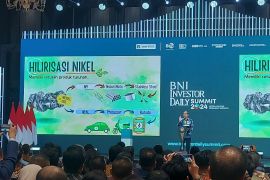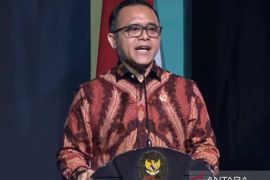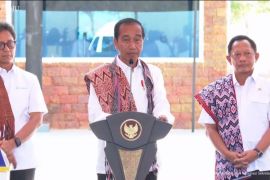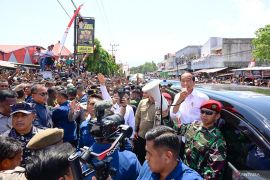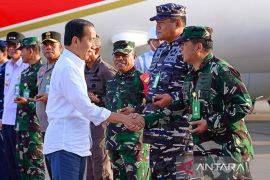Jakarta (ANTARA) - President Joko Widodo (Jokowi), on Wednesday, visited Rogojampi Market, Banyuwangi District, East Java, to review the prices of staple commodities and greet local merchants.
Based on information received in Jakarta, President Jokowi made the most of his visit to the market to directly seek information from local merchants regarding the prices of various basic goods, such as chilies, shallots, and rice.
Siti, one of the merchants, said that the president inquired about the latest prices of chilies.
"The price of small-sized chilies stands at Rp75 thousand (US$4.86) per kilogram, while bigger chilies are being sold for Rp 50 thousand (US$3.24) per kg," she stated after the president's inspection.
According to the merchant, the latest prices mark declines, from around Rp100 thousand (US$6.48) per kg earlier.
She then expressed hope that the prices of chilies and other basic commodities would go down further.
Meanwhile, Nina, a grocery merchant, remarked that the head of state also checked on the prices of rice as well as the stocks of rice distributed under the government's Food Supply and Price Stabilization (SPHP) Program.
The president inquired whether the distribution of SPHP rice was running smoothly, she revealed.
Nina then told Jokowi that the distribution of rice had been on time.
Furthermore, she remarked that the SPHP rice distributed by state-logistics company Bulog had been helpful for the people to face small surges in rice prices.
"We are currently facing slight increases in rice prices. However, the rice supply from Bulog has been helpful," she remarked.
Trade Minister Zulkifli Hasan, East Java Governor Khofifah Indar Parawansa, and Head of Banyuwangi District Ipuk Fiestiandani accompanied President Jokowi during the visit.
Earlier, the president and his entourage arrived at the Banyuwangi International Airport at around 8 a.m. local time.
He then headed to a local post office to personally hand over direct cash aid to people in order to help them strengthen their purchasing power amid negative economic impacts of the weather phenomenon El Nino.





